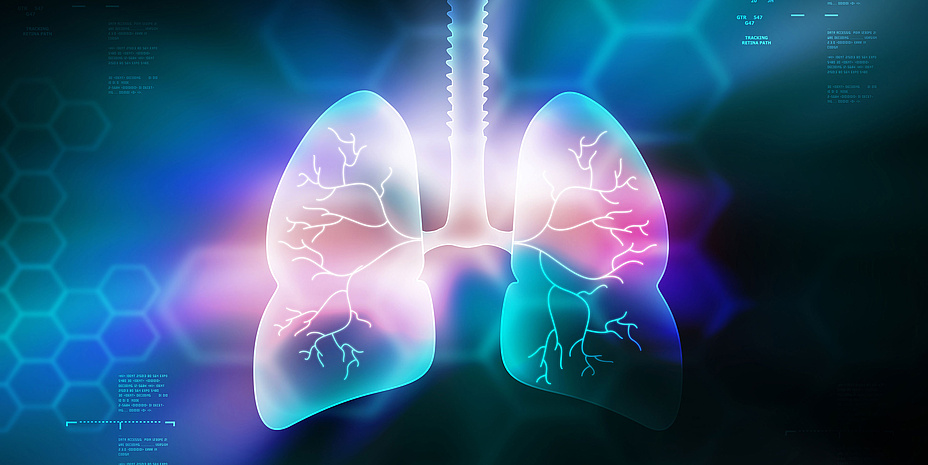Smart Medicine: Digitalization of the Health Care System

The skin patch that monitors body temperature, the implanted chip that monitors medication intake, or communicating pacemakers. Digitization coupled with increasing miniaturization is opening up a whole range of application and business fields for medical technology in the Internet of Things (IoT). The basic requirements for smart things in medical technology are similar to those for use in buildings or vehicles: they have to be networked, configurable and controllable.
However, smart medical technology in particular brings with it special determining factors and challenges due to security and performance requirements, as they affect people’s most personal area of life based on sensitive medical data. “Smart medical devices also have to go through the European approval procedure and comply with the required norms and standards,” says Christian Baumgartner. He heads the Institute of Health Care Engineering at TU Graz (Graz University of Technology), to which a European testing centre for medical devices is affiliated. In addition to classic medical devices such as X-ray machines and pacemakers, software and smart, networked medical devices are increasingly being tested and certified there.
Smartphones as “medical devices”
One example is a product from the Graz-based company Steadysense, which is dedicated to measuring body temperature. The now approved temperature measurement system consists of a skin patch with integrated temperature sensors and an app that uses AI-based algorithms to analyse and display the measured data. The sensor in the patch is activated and read out via an app, allowing the body temperature to be continuously monitored and recorded. The system is also used in the Steadysense ovulation tracker. The fertile and less fertile days are calculated from the woman’s constantly measured body temperature. As soon as ovulation is detected, the system sends a notification.
The product development, manufacturing and marketing of Steadysense products must comply with the EU Medical Device Regulation MDR 2017/745. The quality management system required for these processes has been certified by the European Testing Center for Medical Devices at TU Graz and is continually monitored. And there are other connections, as Christian Baumgartner reveals: “Some of the founding and management team studied at TU Graz themselves.”
In order to improve patient safety, the two EU regulations MDR 2017/745 and IVDR 2017/746 tighten the requirements for product certification. This poses a major financial challenge, especially for start-ups in this field. With the European Testing Center of Medical Devices at TU Graz, Christian Baumgartner and his team can offer companies appropriate assistance or corresponding testing and certification services.
Diagnosis thanks to mobile phone camera
Perhaps the most useful feature of smartphones for medical diagnostics is the impressively high resolution of the cameras. For example, there is a digital otoscope that uses a smartphone camera to remotely diagnose ear infections in children, or birthmark screening using a photo app. Christian Baumgartner: “We will encounter smartphones more and more as medical devices in diagnostics, monitoring and diagnostics provision. Apart from the image function, acceleration sensors and gyro sensors integrated in smartphones allow the monitoring of patients’ movements and are particularly interesting in fall monitoring. Monitoring of vital parameters such as heart rate or blood pressure is also common.” Currently, only a fraction of the total number of health apps are approved as medical devices. Fitness trackers or diet guides are exempt, but software for the diagnosis or treatment of diseases must be classified and certified as a regular medical device.
Cybersecurity in medical technology
Viruses of a different kind are a particularly sensitive issue for smart medical devices: “Cybersecurity is a big deal, especially in networked medical technology applications. The smart medical devices must be safe from unauthorized access, data theft and especially from manipulation. Security gaps in networked high-risk products are not only problematic in terms of data security – there can be a very real danger to life and limb here. Although the EU Medical Devices Regulation calls for this requirement, concrete implementation guidelines are still missing,” says Christian Baumgartner, pointing out a massive blind spot.
Telemonitoring of medical data
“In principle, health care facilities in Austria are now also open to smart health applications in the broader sense. However, we are still at the beginning of nationwide implementations,” says Christian Baumgartner, referring to telemonitoring and online medical care for patients with heart failure such as HerzMobil Styria or HerzMobil Tyrol. The HerzMobil system consists of a body scale, a blood pressure and pulse monitor and a special mobile phone including the HerzMobil app. Patients can use it to quickly and easily transfer measurement data collected at home, their current state of health and relevant medication regimen to medical professionals. A worsening of the disease state is thus recognized earlier and an early change of medication can possibly prevent renewed hospitalization.
“Telemonitoring offers a comprehensive care programme for patients without frequent visits to the doctor,” says Christian Baumgartner. Patients, doctors and health insurance companies are already on board with HerzMobil. The programme is currently being made fit for routine use. However, some persuasion is still necessary, not least among patients,” says Baumgartner.
Kontakt
Christian BAUMGARTNER
Univ.-Prof. Dipl.-Ing. Dr.techn.
TU Graz | Institute of Health Care Engineering with European Testing Center for Medical Devices
Phone: +43 316 873 7377
christian.baumgartner@tugraz.at




